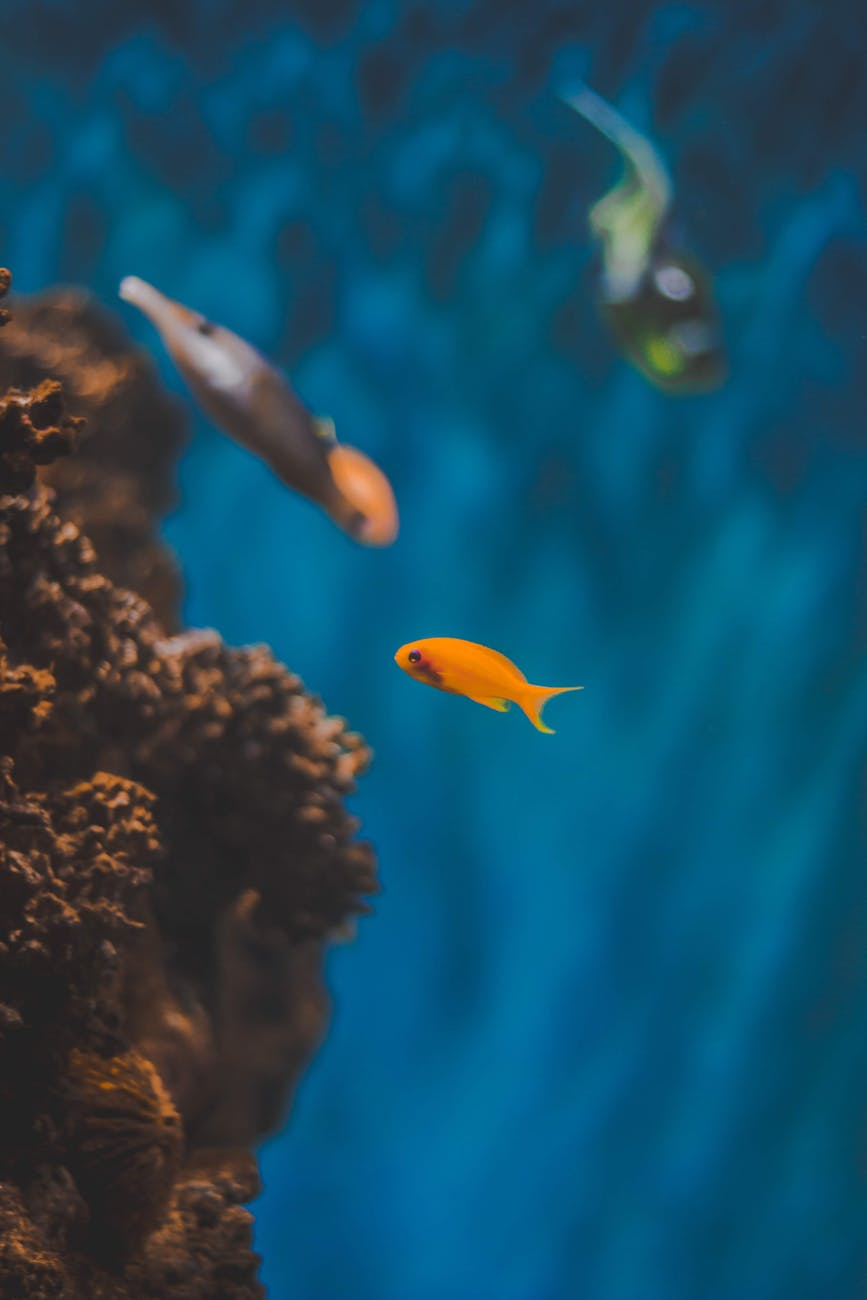Hi, welcome to this hall: We are going to be looking at the types of aquatic habitats, and thier characteristics in biology.
Table Of Contents
- Definition of aquatic habitat
- Types of aquatic habitats
- Characteristics of aquatic habitats
- Examples
- Revision Questions.
See Also
Introduction
Definition Of Aquatic Habitat
Aquatic habitat can be defined as a body of water in which certain organisms live naturally. In other words, aquatic habitats are habitats or places that relates to lives in water. Organisms that live in water are called aquatic organisms.
Examples of Aquatic Organisms
- Fish
- Crabs
- Toads
- Plants
Types Of Aquatic Habitats
There are three types of aquatic habitats.
- Marine or salt water habitats
- Estuarine or brackish water habitats
- Fresh water habitats.
MARINE HABITAT
Meaning: Marine habitat refers to aquatic habitat which contain salt water. Marine habitat include the oceans, lakes, shores and the open seas.

Characteristics Of Marine Habitat
The marine or saltwater habitat has the following characteristics.
- Salinity: Salinity is defined as the degree of saltiness power concentration of salt solution in Oceans. The Marine habitat has a high salinity and it’s average salinity is put at 35.2 per 1, 000.
- Density: The density of marine water is high, hence many organisms can float in it. While the density of ocean water is about 1.028 that of freshwater is 1.00. so, the density of ocean water is higher than that of freshwater.
- Pressure: Water pressure increases in depth at the rate of one atmosphere for every ten metres.
- Size: Maria habitat represent the largest of all the habitats. [More details on Marine habitat here].
- Currents: Currents are always produced by wind at the surface of the ocean.
- Tides: Tides are the alternate rise and fall of the surface of the ocean approximately twice a day.
- Oxygen concentration: The concentration of oxygen in the ocean is highest at the surface while it decreases with depth, and in the very deep parts of the ocean there is practically no oxygen.
- Hydrogen ion concentration: Saltwater is known to be alkaline in nature with ph of about 8.0 – 9.0 near the surface.
- Waves: Waves are movement of surface water of the ocean.
- Light penetration: Light penetrate the ocean only to a maximum depth of 200 metres.
Major zones of the Marine habitats
- Splash zone
- Neritic zone
- Litoral zone
- Benthic zone
- Abyssal zone
- Aphotic zone
- Euphotic zone
- Disphotic
Distribution of organisms in marine habitats and their adaptive features
- Plants
- Animals
Plants In Marine Habitats
- Sea weeds
- Algae
- Sesuvium
- Planktons
Animals In Marine Habitats
- Barnacles
- Cartilaginous fishes
- Bony fish
- Shrimps
- Crabs
- Periwinkles
- Starfish
ESTUARINE HABITATS
Meaning: Estuarine types of aquatic habitats is a body of water formed at the coast as a result of the action of tides which mix saltwater from the sea with freshwater from the land. The mixing of salt water and freshwater results in the formation of a brackish water. This brackish water is what is called estuarine.
Types of Estuaries
Estuary is found in the following bodies of water:
- Delta
- Lagoon
- Bay
Characteristics Of Estuarine Habitats
The following are the characteristics of Estuarine Habitats
- Fluctuations in salinity: Salinity fluctuate in this habitat.
- Turgidity: Turbidity of Estuarine habitats increase especially during the rainy season when lots of debris are brought down by rivers to the habitat.
- Shallowness of water: Unlike the sea water which is deep, the water in estuarine habitats is very shallow.
- Low species diversity: The estuarine habitat has low diversity of species compared to Marine habitat.
- Water is affected by tides: Sea water usually flows rapidly into estuaries at high tides and rushes back into the ocean at low tides.
- High level of nutrients: The estuarine habitat contains abundant nutrients especially the organic detritus which form the bulk of producers in the habitat.
- Low oxygen content: Oxygen content of a estuarine habitat is generally very low and as a result, much of the microbiological activities are anaerobic.
Distribution of Plants and Animals in Estuarine Habitats
Plants Found in Estuarine Habitats
- Planktons
- Algae
- Red mangrove
- White mangrove
Animal Species Found in Estuarine Habitats
- Mosquito larvae and pupae.
- Crabs
- Water snails and shrimps
- Worms
- Mud skippers
- Fishes
Factors Affecting Estuarine Habitats
The factors which affect estuarine habitat are common to aquatic habitats and this include temperature, wind, relative humidity, light and pH.
FRESH WATER HABITATS
Meaning: Fresh water habitat is a body of water formed mainly from inland waters and contain very low of salinity. Examples of fresh water habitat are:
- Rivers
- Ponds
- Streams
- Springs
- Lakes
Types Of Fresh Water Habitat
Fresh water habitats are classified on the basis of their mobility. Based on this, two types are identified. These are:
- Lotic freshwater: These include all running Waters which can flow continuously in a specific direction.
- Lentic fresh waters: These include standing or stagnant Waters.
Characteristics Of Fresh Water Habitats
The following characteristics are associated with fresh water Habitats:
- Low Salinity: Fresh water habitats normally contain very low level of salt. It has about 0.5% of salt compared to about 3.5% for seawater.
- Small in size: Fresh water habitat is usually very small compared to the ocean water which is about 75% of the earth’s surface.
- Variation in temperature: The temperature of fresh water habitat usually varies with season and depth.
- High concentration of oxygen content: Oxygen is usually available in all part of the fresh water especially in surface of the water.
- Shallowness of water: Most freshwater habitat are very shallow hence sunlight can easily penetrate through the water to the bottom. On full class on fresh water habitats [visit here]
Revision Questions
- (a) What is marine habitat? (b) State six characteristics of marine habitat.
- Define estuarine habitat, (b) List six characteristics of a estuarine habitat.
- (a) Define freshwater habitats (b) explain the types of fresh water habitats and give two examples of each type.
- What is aquatic Habitat? (b) List and explain the types of aquatic habitats mentioned above.
